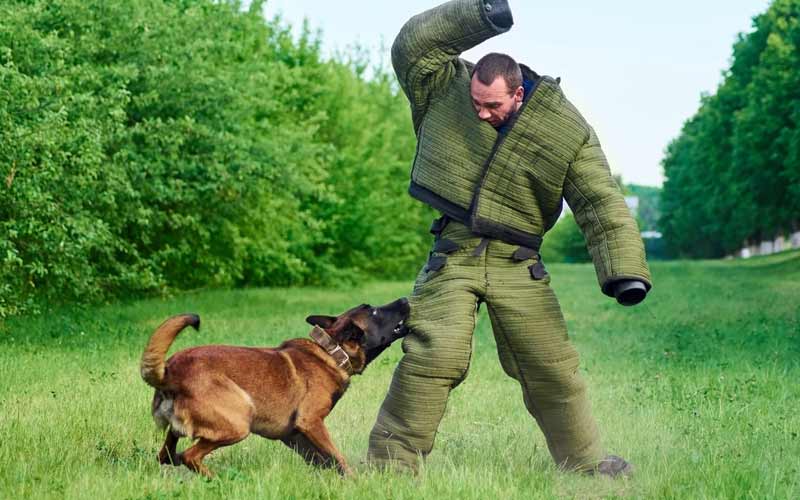Master Necessary Commands: Reliable Canine Training Facilitated
Effective canine training is an essential aspect of accountable pet possession, and understanding necessary commands offers as the structure for an unified connection between trainer and canine. Recognizing the subtleties of canine actions and the training procedure is crucial; nonetheless, the trip to a trained canine frequently provides unexpected obstacles that need interest.
Comprehending Your Pet's Behavior
To realize the nuances of reliable dog training, it is necessary to damage down and assess your dog's actions. Dog training. Comprehending the inspirations behind your canine's activities is important; habits can come from reaction, concern, enjoyment, or a need for interest. By observing your pet dog in numerous circumstances, you can determine patterns that might suggest underlying feelings or demands
For example, a pet that barks excessively may be revealing boredom, anxiety, or a requirement for social interaction. On the other hand, a pet that displays destructive behaviors could be looking for excitement or remedy for stress and anxiety. Acknowledging these triggers enables you to tailor your training technique effectively.
Additionally, it is important to think about the pet's breed characteristics, as they can influence behavior substantially. Some types are inclined to particular characteristics, such as herding or safeguarding reactions, which can impact their responses to specific stimuli.
Finally, consistency in your responses to your pet's habits promotes a better understanding in between you and your animal. This shared understanding is fundamental for building trust and promoting an efficient training procedure that nurtures both behavior modification and positive support.
Vital Commands to Show
Instructing vital commands is a fundamental facet of reliable dog training, giving the structure for a well-behaved and receptive family pet. These commands not only enhance interaction between the proprietor and the pet dog but additionally make certain safety and security in different environments.
One of the most vital commands include "Sit," which urges your dog to continue to be fixed and calm; "Keep," which strengthens the idea of continuing to be in one location up until launched; and "Come," which is important for remembering your pet dog from possibly hazardous situations. "Down" teaches canines to lie down, advertising relaxation and control, while "Leave it" aids stop dogs from choosing up dangerous or unwanted products.
" Heel" is an additional essential command that urges your canine to stroll closely close to you, improving chain good manners. "No" offers as a vital boundary-setting command, helping to deal with undesirable habits.
Training Methods for Success
Efficient pet dog training relies heavily on using a variety of methods that accommodate both the dog's discovering design and the owner's training goals. One crucial approach is positive support, which entails rewarding preferred actions with deals with, appreciation, or play. This approach encourages the canine to repeat those actions, cultivating a solid bond in between owner and pet.

An additional reliable strategy is clicker training, where a distinctive noise, made by a clicker, marks the exact minute a pet does a wanted activity. This specific timing aids pets link the actions with the benefit, boosting their understanding.
Uniformity is critical in all training methods. Establishing clear commands and maintaining the hop over to these guys very same signs aids the pet dog grasp assumptions extra quickly. Additionally, brief, engaging training sessions protect against monotony and boost retention.
Incorporating socializing chances is also vital. Subjecting dogs to numerous atmospheres, individuals, and other pets assists them develop self-confidence and versatility.
Lastly, perseverance plays a considerable function in successful training - Dog training. Each pet learns at their own rate, and understanding this can lead to an extra pleasurable training experience for both the owner and the dog. Carrying out these techniques will certainly establish the foundation for reliable dog training
Common Obstacles and Solutions
Regardless of the most effective training strategies, canine owners commonly run into common difficulties that can prevent progression. One prevalent issue is disparity in commands and cues. When member of the family make use of various commands for the very same habits, it confuses the canine, resulting in inconsistent actions. The solution depends on developing a unified technique amongst all relative, ensuring that everyone uses the same terms and signals.

Additionally, some pets may show stubbornness or lack inspiration. This can commonly be dealt with by including favorable reinforcement methods, such as deals with or appreciation, to description encourage wanted habits. Customizing benefits to what your pet dog finds most encouraging can dramatically improve their interaction.
Lastly, worry or anxiousness can impede development in training. Identifying signs of anxiety and readjusting the training speed appropriately is critical. Employing gradual direct exposure to been afraid stimuli can help develop confidence over time, promoting a more efficient training experience.
Preserving Uniformity and Persistence
Uniformity and persistence are critical in canine training, as they form the structure for attaining long-term behavior modifications. Canines flourish on routine and clear assumptions; hence, keeping a regular technique in commands, benefits, and adjustments is important.
Similarly essential is the role of patience. Training a pet is not a rapid procedure; it requires time and rep. Pet dogs, just like humans, have varying finding out speeds and may not realize commands quickly. Fitness instructors should acknowledge this and continue to be calm, providing support instead of frustration. Favorable reinforcement plays a vital function below, satisfying desired habits and helping to promote a relying on partnership in between the dog and fitness instructor.
Final Thought
Grasping crucial commands is fundamental to efficient pet training, fostering enhanced interaction and enhancing positive behaviors. The application article source of favorable support strategies, paired with consistency and patience, significantly improves the training experience for both the pet dog and trainer. Attending to common difficulties with sensible options even more sustains the training process. Eventually, a well-trained pet dog not just shows excellent actions but likewise creates confidence, contributing to an unified relationship in between the pet dog and its owner.